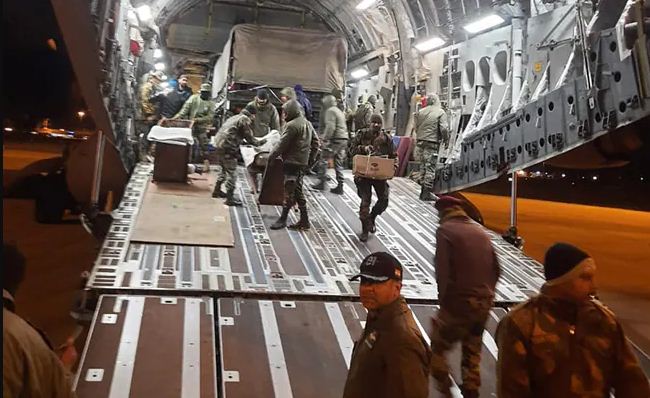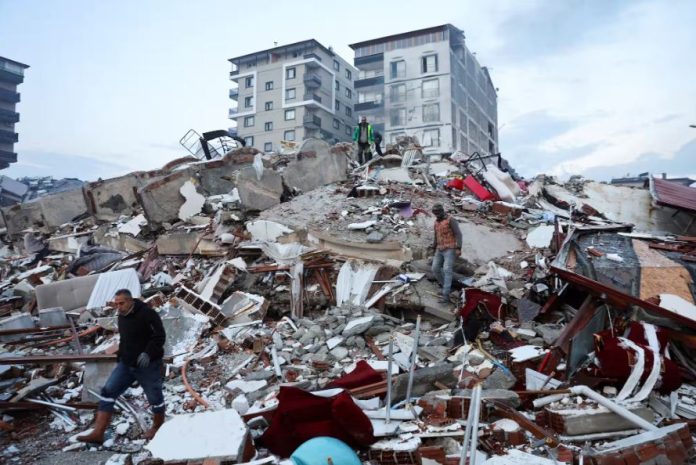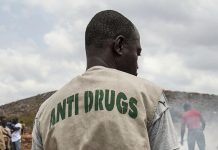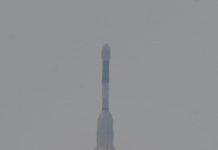By Chanakya
February 6, early morning, as people in a town in Turkey and adjoining Syria were deep in sleep in the midst of a record breaking cold wave, the earth opened up. An earthquake, measuring 7.8 on the Richter scale started flattening houses. As if that wasn’t enough, two more aftershocks, one measuring 7 and the other 6.8 virtually ground the cities to dust and rubble. The death toll in the two countries have crossed 10,000 as of writing this, making this one of the worst natural disasters in history and more bodies are being found amid the debris.
WHO said that up to 23 million people could be affected by the massive earthquake. The countries continue to receive international aid, including from India. India has sent rescue material plus a company of NDRF personnel to help in the massive rescue mission. As of writing this rescuers in Turkey and Syria battled bitter cold in a race against time to find survivors.
Tremors that inflicted more suffering on a border area, already plagued by conflict, left people on the streets, burning debris to try to stay warm as international aid began to arrive.
Survival stories
Some extraordinary survival tales emerge, including a newborn baby pulled alive from rubble in Syria, still tied by her umbilical cord to her mother who died in the quake. “We heard a voice while we were digging,” Khalil al-Suwadi, a relative, told agencies. “We cleared the dust and found the baby with the umbilical cord (intact) so we cut it and my cousin took her to hospital.”
The infant is the sole survivor of her immediate family, the rest of whom were killed in the rebel-held town of Jindayris.
Whole rows of buildings collapsed, leaving some of the heaviest devastation near the quake’s epicentre between the Turkish cities of Gaziantep and Kahramanmaras. The destruction led to Turkish President Recep Tayyip Erdogan declaring a three-month state of emergency in 10 southeastern provinces.


People in some of the hardest-hit areas said they felt they had been left to fend for themselves. “I can’t get my brother back from the ruins. I can’t get my nephew back. Look around here. There is no state official here, for God’s sake,” said Ali Sagiroglu in the Turkish city of Kahramanmaras. “For two days we haven’t seen the state around here… Children are freezing from the cold,” he added.
A winter storm has compounded the misery by rendering many roads – some of them damaged by the quake – almost impassable, resulting in traffic jams that stretch for kilometres in some regions. The cold rain and snow are a risk both for people forced from their homes – who took refuge in mosques, schools or even bus shelters – and survivors buried under debris.
“It is now a race against time,” said World Health Organization chief Tedros Adhanom Ghebreyesus. “We have activated the WHO network of emergency medical teams to provide essential health care for the injured and most vulnerable,” he added.
The death toll will be extraordinary after the dust settles. According to WHO, not only up to 23 million people could be affected, but over 20,000 could have died.
Appeal for help
The Syrian Red Crescent appealed to Western countries to lift sanctions and provide aid as President Bashar al-Assad’s government remains a pariah in the West, complicating international relief efforts.
Washington and the European Commission said that humanitarian programmes supported by them were responding to the destruction in Syria. The UN’s cultural agency UNESCO also said it was ready to provide assistance after two sites listed on its World Heritage list in Syria and Turkey sustained damage.
In addition to the damage to Aleppo’s old city and the fortress in the southeastern Turkish city of Diyarbakir, UNESCO said at least three other World Heritage sites could be affected.


Much of the quake-hit area of northern Syria has already been decimated by years of war and aerial bombardment by Syrian and Russian forces that destroyed homes, hospitals and clinics.
Residents in the quake-devastated town of Jandairis in northern Syria used their bare hands and pickaxes to search for survivors.
The Syrian health ministry reported damage across the provinces of Aleppo, Latakia, Hama and Tartus, where Russia is leasing a naval facility. Even before the tragedy, buildings in Aleppo – Syria’s pre-war commercial hub – often collapsed due to the dilapidated infrastructure.
Following the earthquake, prisoners mutinied at a jail holding mostly Islamic State group members in northwestern Syria, with at least 20 escaping, a source at the facility told agencies.
Active earthquake zone
Turkey is in one of the world’s most active earthquake zones. The country’s last 7.8-magnitude tremor was in 1939, when 33,000 died in the eastern Erzincan province. The Turkish region of Duzce suffered a 7.4-magnitude earthquake in 1999, when more than 17,000 people died.
Experts have long warned a large quake could devastate Istanbul, a megalopolis of 16 million people filled with rickety homes.
Rescue efforts
Rescue efforts continued on February 9, driving up the death toll to over 15,000 as more bodies were found in the rubble on the fourth day of search operations. Tens of thousands are believed to be injured. President Tayyip Erdogan has admitted there were problems with his government’s initial response to a devastating earthquake in southern Turkey, amid anger from those left destitute and frustrated over the slow arrival of rescue teams.
Turkish officials say some 13.5 million people were affected in an area spanning roughly 450 km from Adana in the west to Diyarbakir in the east. In Syria, people were killed as far south as Hama, 250 km from the epicentre. Some who died in Turkey were refugees from Syria’s war.
Indian help
Meanwhile, as a part of India’s ‘Operation Dosth’, the sixth plane carrying rescue personnel, essentials and medical equipment for earthquake relief efforts reached Turkey on Thursday. The sixth flight carried more rescue teams, dog squads, and essential medicines for the quake-hit country.
The sixth C17 plane flight carries more rescue teams, dog squads, and essential medicines for the quake- hit country.
Taking to Twitter, Jaishankar wrote, “The sixth #OperationDost flight reaches Turkiye. More search and rescue teams, dog squads, essential search & access equipment, medicines and medical equipment ready for deployment in the relief efforts.” On his official Twitter handle, the EAM posted pictures of a field hospital in Turkey where medical experts are preparing to treat emergencies.
“The sixth @IAF_MCC aircraft leaves for Turkiye with the remaining component of the field hospital. This includes 54 members of the Indian Army medical team as well as medical and other equipment to establish the facility,” Ministry of External Affairs Spokesperson Arindam Bagchi tweeted.


Turkey has called India a “dost” for its generosity for providing funds to the country after the earthquake caused massive destruction.
Ambassador of Turkey to India Firat Sunel thanked New Delhi and said, “a friend in need is a friend indeed.”
“Dost” is a common word in Turkish and Hindi… We have a Turkish proverb: “Dost kara gunde belli olur” (a friend in need is a friend indeed). Thank you very much India,” said the Ambassador.





















